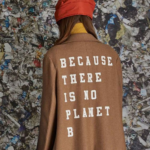Last week, the COP28 in Dubai ended, marking the 28th annual United Nations climate conference. During the two-week conference, governments, organizations, and other stakeholders gathered to discuss how we can limit and prepare for future climate change. It is the most important meeting for climate change decisions, and the outcome is highly anticipated.
One major decision from a previous meeting, for example, is the Paris Agreement during COP21. Here, governments decided we must keep the average global temperature from increasing too much – specifically, staying well below a 1.5-degree Celsius increase.
The conference is very important for the whole world and every industry, including the fashion industry. It is therefore not surprising that many individuals from the fashion industry were present during the two-week conference.
In this post, I will discuss some of the important points, outcomes, and collaborations from the COP28.
Decarbonization and Phasing out Fossil Fuels
The most anticipated outcome of the COP28 revolved around the decisions on fossil fuels. After two weeks of negotiations and discussions, nearly every country agreed to “transition away from fossil fuels”. While this outcome is significant, some people felt disappointed due to the compromises and loopholes in the agreement.
To add, many argue that merely phasing out fossil fuels is insufficient: we should completely stop burning fossil fuels to stay within the 1.5 degrees Celsius increase.
Given that the fashion industry contributes around 10 percent of global carbon emissions, this new agreement holds substantial importance for the industry. Carbon emissions in fashion come from various sources like synthetic materials, transportation, manufacturing, and other processes.
For the fashion world, transitioning away from fossil fuels means focusing on renewable energy and prioritizing different materials.
H&M Group to Invest In Bangladesh Off-shore Wind Project
During the COP28, fashion giants Bestseller and H&M Groups made a pledge to support a wind project near the coast of Bangladesh. This project, developed by Copenhagen Infrastructure Partners and Summit Power, is still in its early phases but can potentially make a big difference in boosting the use of renewable energy in Bangladesh.
This project is expected to make a huge difference as Bangladesh is a key player in manufacturing for the fashion industry. If more renewable energy sources become available for the country, it could have a significant impact by helping to cut down carbon emissions from the fashion sector.
The Launch of the“We Wear Oil” Campaign
Together with Fossil Fuel Fashion, Iranian-American Climate Activist and youngest UN advisor Sophia Kianni launched a campaign to raise awareness of the destructive nature of the fast fashion industry.
In the December Issue of Vogue Arabia, she stated, “One of the biggest problems today is that we consume so much and so fast — and the fashion industry is killing our planet”. She continued, “The fast fashion industry has become part of the fossil fuel industry. We are all literally wearing oil. Fossil fuels — coal, oil, and gas — are by far the largest contributor to the climate crisis.”
With the campaign, Sophia called on the fashion industry to take accountability for the destructiveness of fast fashion.
This was a powerful statement after the COP28 president and oil executive Sultan Al Jaber suggested that there is “no science” to support the need to phase out fossil fuels – a rather controversial claim.
Fashion Revolution’s Demandsfor the COP28
Fashion Revolution, a non-profit organization, had a presence at COP28, bringing a set of requests for the fashion industry. During their appearance, the organization emphasized the need for greater transparency from fashion brands. They pointed out that during COP events, fashion brands often make commitments without providing the necessary details behind them. Fashion Revolution highlighted that while brands report more, they frequently omit information about the actual impact of their commitments.
The organization also called on fashion brands to disclose how they are supporting their suppliers and to provide evidence of their climate action. Additionally, Fashion Revolution urged policymakers to establish binding laws, regulations, and government policies that mandate transparency and corporate accountability concerning environmental and human rights issues.
Another call to action for policymakers was to assist suppliers in assessing financial resources and enhancing their ability to withstand the challenges posed by climate change. These demands from Fashion Revolution aim to foster a more transparent and responsible approach within the fashion industry and its governance.
Read Fashion Revolution’s full list of demands here.
Stella McCartney’s Exhibition
British fashion designer Stella McCartney unveiled the “Stella McCartney’s Sustainable Market: Innovating Tomorrow’s Solutions” exhibit at COP28. This showcase aimed to inspire and educate attendees on the potential of existing and upcoming technologies. The exhibit featured 15 pioneers who are leading the way in sustainable solutions, offering a glimpse into the exciting possibilities that lie ahead.
Below you can find the innovators that were included in the exhibition.
Textile Exchange’s 2023 Materials Market Report
Along with Stella McCartney’s display, the Textile Exchange shared its 2023 Materials Market Report. This report helps the textile industry cut down on emissions and follow a plan to limit the temperature rise to 1.5 degrees. It looks at materials used in fashion and other areas. This report highlights that we are increasingly using more eco-friendly materials, but at the same time, the use of fossil fuel-based materials is also increasing. The Materials Market Report highlights the need for change in the fashion industry and the need to reduce fossil fuel based materials rapidly.
Sources
All pictures link to their source, and all credits go to the rightful owners.





